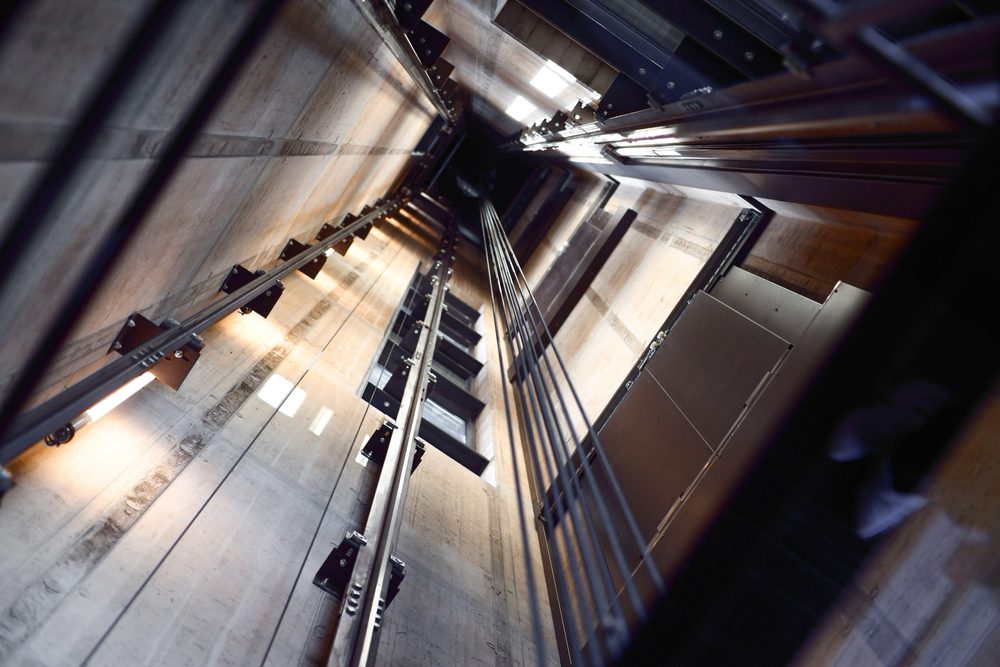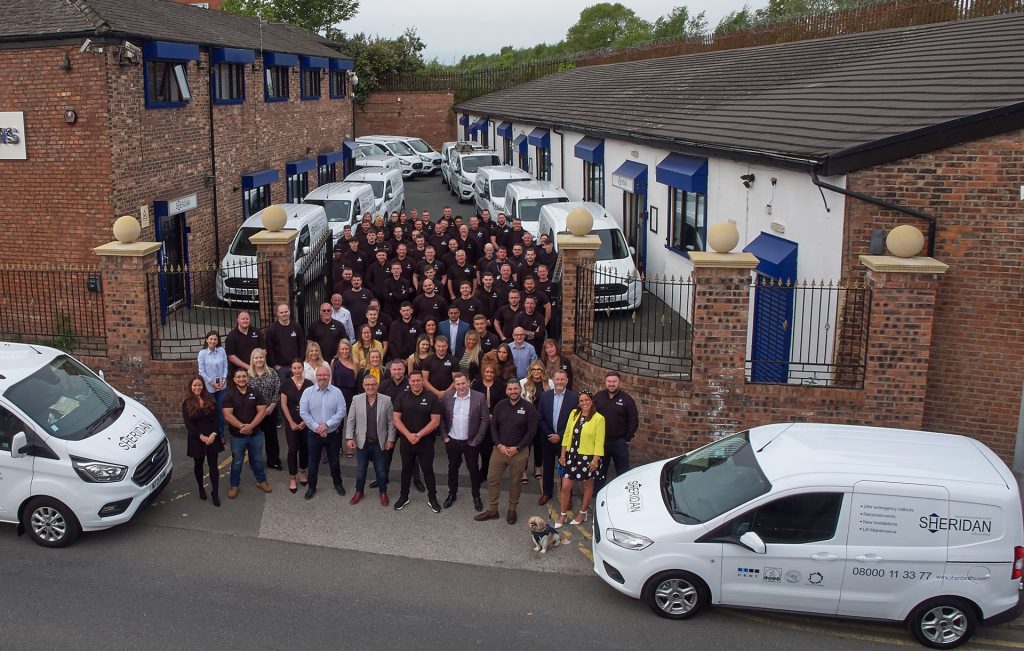Many lifts around the world use established hydraulic lift systems, which facilitate extreme heavy lifting and make the entire lifting process easier.
As a highly effective method of moving both people and items (such as products and stock) between various floors, hydraulic lifts are used in passenger lifts as well as goods and service lifts and even vehicle lifts across the globe.
At Sheridan Lifts, we design, install, maintain and repair hydraulic lifts in a wide range of operating environments to meet your exact requirements – we are the UK’s leading independent lift company.
Knowing which hydraulic lift system is best for your company can be difficult because there are so many different types available. Likewise, understanding how they work, what they are, and their benefits are important – and often not so easy to understand without sufficient research.
That’s why we are here to use our extensive knowledge of the lifts industry to break down everything you need to know (and more!) about hydraulic lifts.

What Are Hydraulic Lifts?
A hydraulic lift is a lift system that uses force generated by fluid pressure, on a liquid inside a cylinder, to move a piston in an upward motion. This will then move and transport high load capacities between floors.
So, hydraulic lifts are essentially a lifting system used in a variety of working environments and vehicles for people to effectively and safely carry out their job. They can be used in factories, private residencies, forklift trucks, commercial buildings and more.
Pascal’s law for generating force or motion, which states that pressure change on an incompressible liquid in a confined space is passed equally throughout the liquid in all directions, serves as the foundation for hydraulic lifts – they follow EN-81.2 standard requirements
There are actually different types of hydraulic lifts that are designed and used for different purposes, such as:
- Passenger hydraulic elevators
- Garage lifts
- Holed hydraulic lifts
- Holeless hydraulic lifts
- Roped lifts
Hydraulic lifts can even be ideal for modern homes – just ask us for more details.
How Do Hydraulic Lifts Work?
A piston connected to a cylinder filled with oil (hydraulic ram) is what powers hydraulic lifts. One end of a hydraulic cylinder bears hydraulic pressure from an electric motor with a pressure switch, which causes the piston to seamlessly move upward, lifting the cabin.
Force is applied at one end to an incompressible liquid, driving force to the other end. In short, a screw pump pushes oil into the cylinder, pushing the piston upwards.
For hydraulic lifts used in buildings, when they reach a floor, the pump with the filter is turned off, and the lift system is held securely in place by the trapped oil in the cylinder as it rests on top of the piston.
In order for the lift to descend, the valve is opened to let oil flow back into the tank, where it is forced back by the lift’s gravitational pull. Oil can only move from the tank into the cylinder while the valve is closed, whereas, when the valve is open, oil can only flow back into the tank from the cylinder.
As mentioned earlier, in the section just above, there are various types of hydraulic lifts that can differ in the way that they work, so keep in mind that some hydraulic lifts may operate slightly differently. However, one commonality is that they all use hydraulic energy and are energy-efficient lift systems.

The Advantages and Disadvantages of Hydraulic Lifts
As with anything, hydraulic lifts come with their share of pros and cons, which you may want to consider or use to compare with other lift systems. Installation costs for hydraulic lifts are often lower than those for traction lifts, while less electricity is used as well.
If you want to know more, we have listed some of the advantages and disadvantages of hydraulic lifts below.
Cost Effective
One advantage of hydraulic lifts, as we briefly mentioned earlier, is that they are relatively cost-effective and inexpensive to install – a lot more affordable than other types of lifts like traction lifts or floor lifts. If you have a smaller budget, this is your best solution that (certainly) won’t blow your bank.
Space Efficient
Another benefit of hydraulic lifts is that they occupy less space in buildings – they need around 10% less room for the lift shaft than many other lift devices require. They use up less space, and the machinery can be stored in a separate place too.
As a knock-on benefit, this allows design engineers more space when designing a building, and allows more space for you to store things within your working premises. The floor also supports the system, so it shouldn’t require any reinforcement.
Low Noise Pollution
Yet another advantage of hydraulic lifts is that they are low in noise pollution. The hydraulic pump machinery is the primary source of noise for hydraulic passenger lifts.
To lessen the noise, the hydraulic pump might be put in a room by itself or at the bottom of the elevator shaft. We can’t forget the durable design and attractive design of this lift system.
Easy Maintenance
In general, hydraulic systems require very little upkeep or maintenance and are pretty straightforward to maintain. Ropes or pulleys are not a concern, and a hydraulic system that is outside of the lift shaft is equally as simple to maintain, which provides an added level of convenience.
Speed
The major disadvantage of hydraulic lifts, unfortunately, is that they have a fairly slow lifting speed and often can’t move at speeds higher than 150ft per minute – although this is mainly on longer lift travels. They do have a great level of mobility, however.
Pollution
This style of elevator produces a great amount of heat. Therefore, efficient temperature control – or a machine-room control system – is required, because the temperature affects the oil’s ability to function as a hydraulic fluid.
At the base of the elevator, hydraulic oil may spill from the pumping system and into the ground (if not installed correctly) which could, worst case scenario, pollute the groundwater or contaminate the soil.
On a whole, however, the benefits of hydraulic lifts certainly outweigh their cons – making hydraulic lifts an extremely effective and efficient lifting system.
One of the safest lift systems available, with good usage levels, a hydraulic lift is also less risky for specialists to perform maintenance since there is no counterweight and cable system.
Find out more about our lift maintenance packages here.

Get Your Hydraulic Lift Project Started with Sheridan Lifts
No matter how simple – or complex – your industrial, domestic or commercial lifting requirements, Sheridan Lifts are a reliable and independent lift expert company that can design the ultimate lift solution for you or your business.
With a wealth of expertise and years of experience in the lift industry – as well as being a highly accredited lifts service – we are specialists in designing, installing, maintaining and repairing hydraulic lifts and various other lift systems for a wide variety of industries across the United Kingdom.
Whatever you need – we have you covered. If you are interested in learning more about hydraulic lifts, or anything else about our lift systems for that matter, don’t hesitate to get in touch with us today for a free no-obligation quotation.